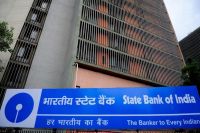
Rising Non Performing Assets (NPAs) of the banking sector is emerging as a systemic risk factor for the economy. As per the latest quarterly estimates, Gross NPAs of scheduled banks is around 12% of the assets. According to credit rating agencies, NPA figures are much higher at 15 per cent. The present level of NPAs can be compared only to the crisis period in early 1990s where the NPAs touched nearly 25 percent.
NPA shows bad symptoms in the economy; showing that the corporate are having declining profit and individuals are facing falling income, so that they are now defaulting.
Similarly, they indicate a painful future for the economy. Strong disciplinary measures by the central bank immediately to correct the NPAs will reduce loan off takes and economy’s slowdown agony may go up. Usually, the corrective measures to reduce the NPAs will produce another wave of reduce loan off take for consumption and investment-resulting in weak economic growth. Banks are highly procyclical institutions. They expand loans during booms and reduce them during adverse times.
The present high level of NPAs is largely a result of corporate defaults. Big corporate like Kingfisher, Suzlon, DLF etc have to repay big ticket loans. Slowing economy and falling profit have worsened their position. Hence, for the RBI, the situation is alarming from the viewpoint of financial stability.
The RBI in the next monetary policy announcement may come out with strong credit crunching measures to shield the banking sector from further deterioration. Already there is the provisioning norms to safeguard the banks from having too much risks. According to the provisioning norms, banks have to set apart a given proportion of the NPAs from its profit. At present, the Provisioning Coverage Ratio is 70 percent.
Besides provisioning, the RBI in the next monetary policy may raise risk weights to certain sectors to reduce the loans and thus future defaults.










